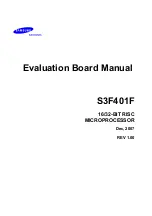
DS792DB1
5
CDB43L22
The CS43L22 is configured using the Cirrus FlexGUI. The device configuration registers are accessible via
the “Register Maps” tab of the Cirrus FlexGUI software. This tab provides low-level control of each bit. For
easier configuration, additional tabs provide high-level control.
Section 4 “Software Mode Control” on
provides configuration details.
1.5
CS8416 Digital Audio Receiver
A complete description of the CS8416 receiver and a discussion of the digital audio interface can be found
in the CS8416 data sheet.
The CS8416 converts the input S/PDIF data stream from the optical or RCA connector into PCM data that
is input to the CS43L22.
Selections are made by using the “Board Configuration” tab of the Cirrus FlexGUI software.
provides configuration details.
1.6
Oscillator
The socketed on-board oscillator can be selected as the system master clock source by using the selections
on the “Board Configuration” tab of the Cirrus FlexGUI.
Section 4 “Software Mode Control” on page 11
pro-
vides configuration details.
The oscillator is mounted in pin sockets, allowing easy removal or replacement. The device footprint on the
board will accommodate full- or half-can-sized oscillators.
1.7
I/O Stake Headers
The evaluation board has been designed to allow interfacing with external systems via a serial port header
(reference designation J8) and a control port header (reference designation J109). The serial port header
provides access to the serial audio signals required to interface with a DSP (
The control port header provides bidirectional access to the I²C control port signals by simply removing all
the shunt jumpers from the “USB” position. The user may then connect a ribbon cable connector to the “Ext
Sys Connect” pins for external control of board functions. A single row of “GND” pins are provided to main-
tain signal ground integrity. Two unpopulated pull-up resistors are also available should the user choose to
use the CDB43L22 logic supply (VL) externally.
1.8
Analog Inputs
Four stereo jack connectors can be used to supply AC coupled line-level analog inputs to the CS43L22 for
testing the device in passthrough mode.
illustrates how the analog passthrough inputs are connected and routed.
details the jumper selections. The CS43L22 data sheet specifies the allowed full scale input voltage
level.
1.9
Analog Outputs
The CDB43L22 has a stereo headphone/line output jack (J40) and a dedicated stereo headphone (HP) out-
put jack (J21) to monitor the CS43L22’s ground centered analog output. The dedicated HP jack (J21) has
circuitry that drives the SPKR/HP pin low when a stereo jack is inserted thereby allowing users to test the
CS43L22’s HP detect capability. Stake headers (J3 and J9) are provided to allow the user to select either
a 16
Ω
or a 32
Ω
load for the headphone amplifier output. Stake headers( J1 and J2) are also provided to
allow one to filter HP/Line outputs from the board. HP jack J21 can be used to connect a real headphone to
provide an actual headphone load while performance measurements are taken on HP jack J40. When con-
Содержание CDB43L22
Страница 20: ...20 DS792DB1 CDB43L22 8 CDB43L22 SCHEMATICS Figure 10 CS43L22 Analog I O Schematic Sheet 1 ...
Страница 21: ...DS792DB1 21 CDB43L22 Figure 11 S PDIF Digital Interface Schematic Sheet 2 ...
Страница 22: ...22 DS792DB1 CDB43L22 Figure 12 Micro FPGA Control Schematic Sheet 3 ...
Страница 23: ...DS792DB1 23 CDB43L22 Figure 13 Power Schematic Sheet 4 ...
Страница 24: ...24 DS792DB1 CDB43L22 9 CDB43L22 LAYOUT Figure 14 Silk Screen CDB43L22 CS43L22 ...
Страница 25: ...DS792DB1 25 CDB43L22 Figure 15 Top Side Layer ...
Страница 26: ...26 DS792DB1 CDB43L22 Figure 16 GND Layer 2 ...
Страница 27: ...DS792DB1 27 CDB43L22 Figure 17 Power Layer 3 ...
Страница 28: ...28 DS792DB1 CDB43L22 Figure 18 Bottom Side Layer ...






































